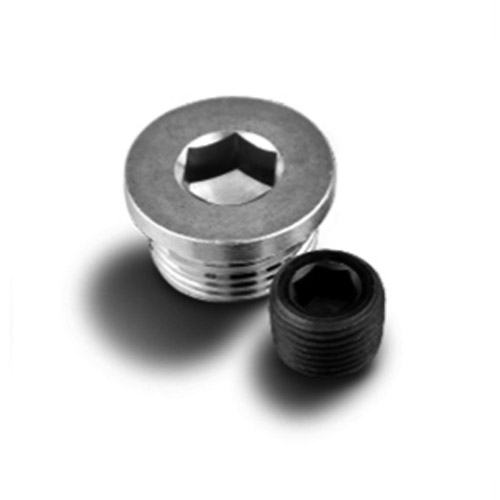

chemical anchor fastener
Nov . 19, 2024 17:45 Back to list
chemical anchor fastener
Understanding Chemical Anchor Fasteners A Comprehensive Guide
Chemical anchor fasteners, sometimes referred to as resin anchors or epoxy anchors, have gained significant traction in the construction and engineering industries due to their unparalleled strength and versatility. Unlike mechanical fasteners that rely on friction and clamping force, chemical anchors utilize a chemical bonding process to secure elements together. This article explores the principles, applications, advantages, and installation of chemical anchor fasteners.
What Are Chemical Anchor Fasteners?
At their core, chemical anchor fasteners consist of two main components a resin and a hardener. When mixed, these components undergo a chemical reaction that causes the resin to cure and harden, forming a robust bond with the base material, typically concrete or masonry. This bond provides a secure, load-bearing connection between the anchor and the substrate.
How Do They Work?
Chemical anchors work by filling the voids and imperfections in the substrate material. The resin penetrates into these spaces, creating a mechanical interlock as well as a chemical bond. This unique combination allows chemical anchors to achieve high pull-out resistance and shear strength, making them suitable for dynamic loads and harsh environmental conditions.
Applications of Chemical Anchor Fasteners
Chemical anchor fasteners are versatile and can be used in various applications, including
1. Structural Steel Installation They are commonly employed in attaching steel elements to concrete structures, providing the necessary support for beams, columns, and trusses.
2. Post-Installed Rebar Chemical anchors are often used to secure rebar in concrete, ensuring structural integrity in reinforced concrete applications.
3. Heavy Machinery Anchoring In industrial settings, these anchors can be used to secure heavy machinery and equipment, reducing vibrations and increasing stability.
4. Outdoor Installations Due to their resistance to corrosion and weathering, chemical anchors are suitable for use in outdoor applications, such as signage, fences, and gates.
5. Facade Attachments They are ideal for attaching façade elements to buildings, providing a secure solution that can withstand wind loads and other environmental factors.
Advantages of Chemical Anchor Fasteners
Chemical anchor fasteners offer several benefits over traditional mechanical fasteners
chemical anchor fastener

1. High Load Capacity Due to the strong bond formed between the anchor and substrate, chemical anchors can bear heavy loads without the risk of failure.
2. Less Sensitivity to Installation Conditions Unlike mechanical anchors, which can be sensitive to the condition of the base material, chemical anchors can provide reliable performance even in less-than-ideal conditions, such as cracked concrete.
3. Corrosion Resistance Many chemical anchors are formulated to be resistant to moisture and chemicals, making them suitable for use in harsh environments.
4. Versatility They can be used in various materials, including concrete, brick, and block, making them a versatile solution for many construction projects.
5. Non-Damaging Removal If removal or adjustment is necessary, chemical anchors can often be detached with minimal damage to the substrate.
Installation Process
The installation of chemical anchor fasteners involves several critical steps to ensure optimal performance
1. Drilling the Hole A hole is drilled into the substrate using a hammer drill or rotary hammer. It is crucial that the hole is of the correct diameter and depth as specified by the anchor manufacturer.
2. Cleaning the Hole Dust and debris are removed from the hole to ensure a solid bond between the resin and the substrate.
3. Injecting the Resin The resin and hardener are mixed (if required) and injected into the hole, filling it adequately.
4. Inserting the Anchor The anchor is then inserted into the hole, ensuring that it is fully surrounded by the resin.
5. Curing Time The anchor must be left undisturbed during the curing process. This can range from a few minutes to several hours, depending on the specific product being used.
Conclusion
Chemical anchor fasteners represent a significant advancement in fastening technology, combining the strength of chemical bonding with the versatility required by modern construction applications. They offer unparalleled load capacity, resistance to environmental factors, and ease of use, making them an invaluable tool for engineers and contractors alike. As construction methods continue to evolve, the importance of reliable fastening solutions like chemical anchor fasteners will only increase, paving the way for safer and more robust structures.
Latest news
-
Hot Dip Galvanized Bolts-Hebei Longze|Corrosion Resistance&High Strength
NewsJul.30,2025
-
High-Strength Hot-Dip Galvanized Bolts-Hebei Longze|Corrosion Resistance&High Strength
NewsJul.30,2025
-
Hot Dip Galvanized Bolts-Hebei Longze|Corrosion Resistance&High Strength
NewsJul.30,2025
-
Hot Dip Galvanized Bolts - Hebei Longze | Corrosion Resistance, High Strength
NewsJul.30,2025
-
High-Strength Hot Dip Galvanized Bolts-Hebei Longze|Corrosion Resistance, Grade 8.8
NewsJul.30,2025
-
Hot Dip Galvanized Bolts-Hebei Longze|Corrosion Resistance,High Strength
NewsJul.29,2025

